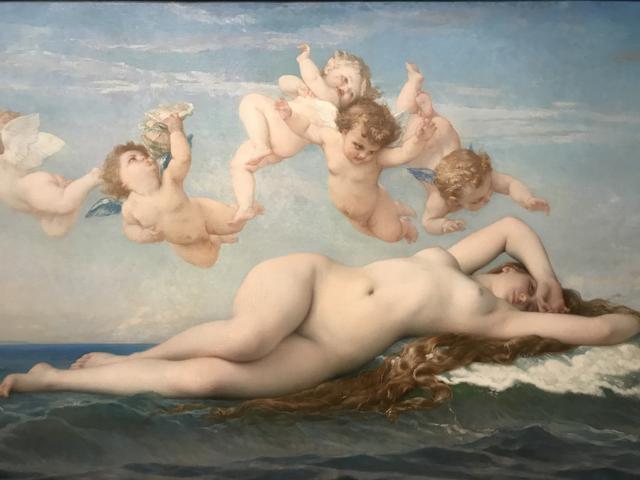The birth of Venus

The Birth of Venus by Alexandre Cabanel is a stunning painting that showcases the artist's exceptional talent and mastery of classical techniques. Created in 1863, this masterpiece was highly praised by the Paris Academy of Arts and received great acclaim from the public when it was exhibited at the Salon of 1863. Even Napoleon III was so impressed by the painting that he decided to add it to his personal collection, solidifying its status as a true work of art.
Cabanel's painting depicts the mythological scene of the birth of Venus, the goddess of love and beauty, emerging from the sea on a shell. The artist's attention to detail and his ability to capture the idealized female form in a graceful and elegant manner are truly remarkable. The painting exudes a sense of classical beauty and harmony, reflecting the artistic trends of the 18th century.
The portrayal of Venus in the painting is both sensual and tasteful, embodying the classical ideals of beauty and grace. Cabanel's choice of subject matter, with its mythological themes and emphasis on the female nude, was in line with the artistic conventions of the time. The painting's composition, with Venus surrounded by delicate drapery and set against a serene background, creates a sense of timeless beauty and elegance.
Despite its initial popularity, The Birth of Venus also faced criticism from some quarters. The renowned writer Emile Zola, for example, famously described the painting as depicting Venus as a "delicious whore" made of "white and pink marzipan." This critique highlights the tension between the idealized beauty of classical art and the more realistic and gritty portrayals that were emerging in the art world at the time.
Overall, The Birth of Venus remains a captivating and iconic work of art that continues to inspire and enchant viewers to this day. Its combination of classical beauty, mythological themes, and exquisite technique make it a must-see for any art lover or tourist visiting the Salon of 1863. Cabanel's painting is a true masterpiece that showcases the enduring power of classical art to captivate and inspire audiences across generations.
© ChatGPT 3.5